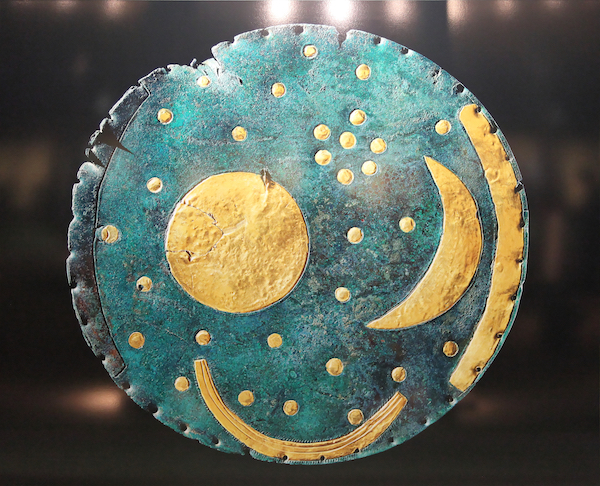Don't miss the latest stories
World’s Oldest Map Of Stars Goes On Public Display At The British Museum
By Alexa Heah, 20 Oct 2021
Subscribe to newsletter
Like us on Facebook

Image via Frank Vincentz / Wikimedia Commons (CC BY SA 4.0)
The world’s oldest map of stars will be going on public display at an upcoming World of Stonehenge exhibition by The British Museum. The map—named Nebra Sky Disc—is believed to be about 3,600 years old, and is one of the oldest representations of the night sky we have left.
The intricate disc of the cosmos was first discovered in Germany in 1999, and has since been dubbed by UNESCO as “one of the most important archaeological finds of the 20th century.”
The disc itself is rather small, measuring just 12 inches wide. It’s decorated with a turquoise-colored patina, with gold symbols representing what appears to be the sun, moon, and constellations of stars.
This exhibition will mark the first time the map has been taken out of Germany for 15 years, and the first time it will be unveiled to the British public. It will be only the fourth country the artifact has ever been showcased in.
On display alongside the map will be a 3,000-year-old sun pendant found in Britain, which the museum calls “the most significant piece of Bronze Age gold” to be found in the nation.
According to USA Today, the rest of the exhibition will focus on the history behind the Stonehenge. While the map and pendant aren’t directly related to the site itself, they paint a picture of what the world was like during that ancient period in Europe.
“The Nebra Sky Disc and the sun pendant are two of the most remarkable surviving objects from Bronze Age Europe. While both were found hundreds of miles from Stonehenge, we’ll be using them to shine a light on the vast interconnected world that existed around the ancient monument, spanning Britain, Ireland, and mainland Europe,” said curator Neil Wilkin.
The World of Stonehenge exhibition will take place from February 17 to July 17 next year. For more information, click here.
[via USA Today, cover image via Frank Vincentz / Wikimedia Commons]
Receive interesting stories like this one in your inbox
Also check out these recent news





